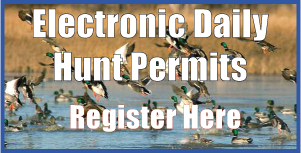Chronic Wasting Disease (CWD)
KDWP is offering FREE, Limited Chronic Wasting Disease testing during the 2024-2025 deer seasons. For details, click "2024-2025 CWD Sampling Information" below or see CWD page in the 2024-2025 Kansas Hunting & Furharvesting Regulations Summary, here https://ksoutdoors.com/Hunting/Hunting-Regulations.
The first case of CWD was found in a captive bull elk in Harper County in 2001. As of 30 June 2024, CWD has been detected in 1075 cervids, including 2 captive elk, 1 captive mule deer, and 1072 wild, free-ranging deer. All Surveillance Zones in Kansas now have CWD detections. CWD surveillance began in 1996 and, to date, 36,038 cervids have been sampled and tested for CWD. Hunters and other wildlife enthusiasts can avoid the human-assisted spread of CWD by not transporting a live or dead deer or elk from areas where CWD occurs. HUNTERS ARE ENCOURAGED TO USE ELECTRONIC DEER CHECK-IN (E-TAG) OR LEAVE EVIDENCE OF SEX ATTACHED TO THE CARCASS. THEN, BONE-OUT DEER, AND LEAVE CARCASSES IN THE COUNTIES WHERE DEER ARE TAKEN. MOVING CARCASSES MOVES PRIONS AND CWD TO NEW LOCATIONS! There is currently no known treatment or eradication method for CWD, so preventing the introduction of the the disease into new areas is extremely important to maintaining the health of local deer herds. Baiting and feeding deer tend to concentrate deer at small point on the landscape, often with the trails leading to the feeding sites resembling the wheel spokes of a bicycle. Anytime animals are concentrated at this type of "hub," the likelihood of disease transmission increases in a deer herd. More alarming, the transferring of CWD prions to healthy deer is not the only concern. Diseases such as bovine tuberculosis, foot rot bacteria, fungal pathogens, hemorrhagic disease, and a host of detrimental parasites, including exotic lice, flukes, roundworms, mange mites, lungworms, and barberpole worms are transmitted more efficiently when deer are concentrated in a small area, especially around feeding stations. Think of future generations of hunters and do your best to lower wildlife disease transmission risk.
Other Important Information
1. No human has contracted CWD to date, but all scientists agree that the RISK IS NOT ZERO based on laboratory experiments.
2. KDWP does not recommend eating any sick wildlife, and a CWD-positive deer is considered sick wildlife, even though most positive deer look apparently healthy. Testing deer lymph nodes or obex is the only way to really know if a deer is negative or positive.
3. Normal cooking temperatures do not deactivate/denature CWD prions; they are very stable structures. It takes about 1100 degrees Fahrenheit to destroy prions.
Watch this video to learn how to extract the correct lymph nodes for CWD Testing.
https://www.youtube.com/watch?v=ygoOy0gldQM
Another major concern is the potential for CWD to spread from captive cervid farms into the wild cervid populations. Once a disease gets into a wild population of animals, it is virtually impossible eradicate. KDWP recommends that every captive cervid operator enroll in the voluntary CWD monitoring program administered by the Kansas Department of Agriculture, Animal Health Division. The sooner diseases such as CWD can be detected in captives, the sooner control efforts can begin and possibly prevent disease from getting outside the fence and spreading to wild populations of the state. CWD is only one of many diseases that could go undetected in an unmonitored captive cervid herd. Bovine tuberculosis and Foot and Mouth Disease (FMD), for example, are serious diseases that could seriously damage not only populations of deer and an annual 350 million-dollar hunting economy but could also threaten the 6 billion-dollar Kansas cattle industry via quarantines, loss of accreditation, and loss of global export.
IMPORTANT: Help Control the Spread of CWD and CWD Prions in Kansas!!
1. Complete an Electronic Check-In (E-Tag) for deer taken with Antlerless Only permits. Deer taken with Either Sex permits can be deboned in the field without Electronic-Deer-Check-In. The tag stays with the meat!
2. Remove the musculature (deboning) from the carcass and leave the carcass at the kill site. Make sure to complete Step 1 first.
3. If at all possible, do not transport a carcass from counties known to have CWD (see map to the right). Use electronic deer check-
in: https://programs.ksoutdoors.com/Programs/Electronic-Deer-Check-in for deer taken with Antlerless Only (AO) permits.
4. If you have to transport a whole carcass away from the kill site, take or send the deboned carcass, spinal column and head to your county landfill for disposal, once you have deboned the carcass at your place of processing. Don't carelessly discard this material where other deer and scavengers can contact it. Careless disposal of a cervid skeleton could potentially start a CWD hotspot in your area.
5. Keep the deer permit/tag with the meat. For more information about CWD, visit the CWD Alliance website at http://cwd-info.org/.
Click HERE for information concerning CWD Regulations for Resident and Non-Resident Hunters
National Wildlife Health Center (USGS) has links to current research and popular articles such as “The Quiet Spread of CWD” which appeared in Field & Stream.
Centers for Disease Control and Prevention has information about CWD and humans.
Chronic Wasting Disease Alliance has links to state regulations regarding CWD carcass
American Veterinary Medical Association has information about precautions hunters and anyone who spends time outdoors should take to protect themselves from potential risks.











